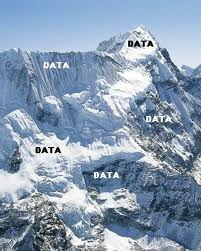Demands by regulators for increased frequency of reporting and more granularity of data in financial stress testing “are creating a data mountain,” said Jon Asprey, VP Strategic Consulting, Trillium Software. He was the first of two speakers to address the issue of data in stress testing in a webinar organized by the Global Association of Risk Professionals on January 28, 2014. He contrasted the new demands with early (pre-financial crisis) days of Basel reporting, when the summary level was sufficient.
The data mountain has a significant impact on financial institutions, creating “the month-end panic,” Asprey said, since reporting at most financial firms is not fully automated. New levels of reporting involve a “huge amount of overhead and effort.”
Asprey cited as an example of increased demand the Comprehensive Capital Analysis and Review (CCAR) reports, mandated by the Dodd-Frank Act. Not only does it require more frequent submissions (monthly, for retail portfolio; quarterly, for commercial), but the Federal Reserve Board (FRB) is asking for some 300-plus attributes to be submitted in a pre-defined format devised by the FRB and its data aggregators.
 This heightened regulatory pressure is causing an IT bottleneck, noted Asprey. Previously, risk managers relied on the IT department to help manage demands “but now we see business subject matter experts (SMEs) need to be involved.” He described a recent “disconnect” he knew of: the business team needed certain results in one week whereas the IT group could furnish the results in 8 to 12 weeks.
This heightened regulatory pressure is causing an IT bottleneck, noted Asprey. Previously, risk managers relied on the IT department to help manage demands “but now we see business subject matter experts (SMEs) need to be involved.” He described a recent “disconnect” he knew of: the business team needed certain results in one week whereas the IT group could furnish the results in 8 to 12 weeks.
Asprey paused while David O’Connell, Senior Analyst, Aite Group made his presentation. Asprey returned to the lectern to describe an unnamed client case study regarding data assurance for CCAR reporting.
In the case study, Asprey enumerated the steps taken, ranging from data extraction up to actual submission to the FRB. [Ed. Note: see slide 31 in presentation; link given below.]
The client needed time to screen its data points on a constant basis. “It was a large volume of data,” said Asprey, “and the risk team needed to be able to update rules and deploy changes within hours.” Constant assessment was necessary because sometimes an error would be found in the data after aggregation or file preparation and needed to be addressed before submission.
Asprey said that solution providers such as Trillium Software created a “self-service data assurance environment” that put a dashboard on every team member’s screen. It attracted interest from other business groups at the bank. Senior management at the bank were impressed, and said the self-service approach “was as transformative to the productivity of [the] team as the introduction of desktop word processing back in the 1990’s.” ª
Click here to go to the second presentation. ª
The webinar presentation can be found at: http://event.on24.com/r.htm?e=733934&s=1&k=58F70BFD2BC23EA12BFFC8023A7C4B08
The research paper can be found at: http://www.trilliumsoftware.com/success/_pdf/Data_The_Tail_That_Wags_Stress_Test_Web_Slides.pdf
More information about Trillium’s CCAR Data Assurance Solution can be found here: http://www.trilliumsoftware.com/business/banking/ccar/

